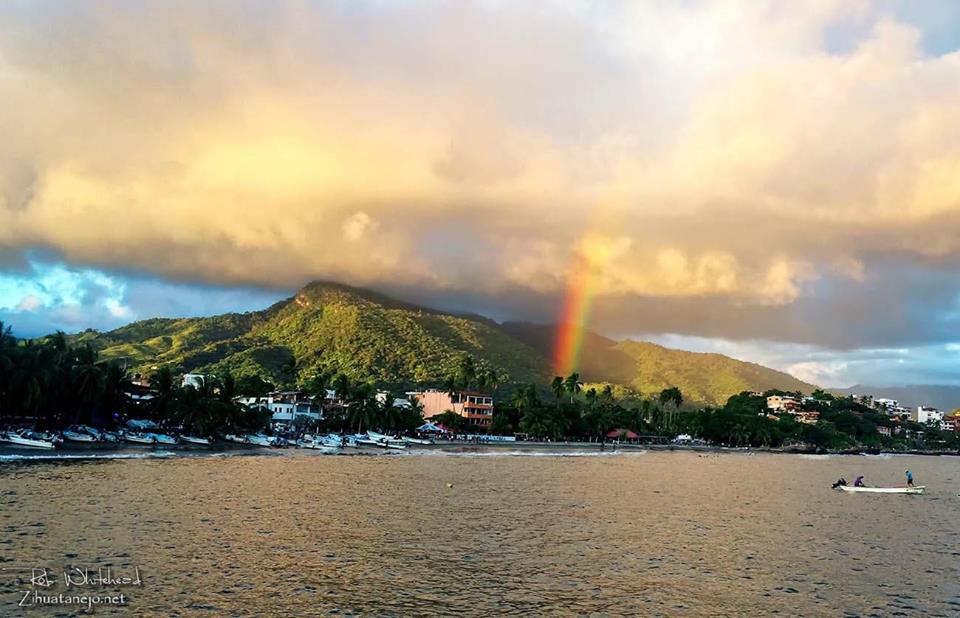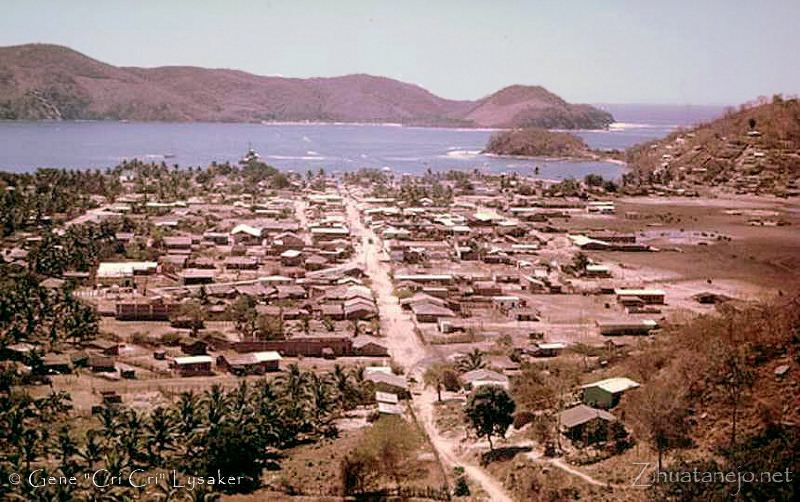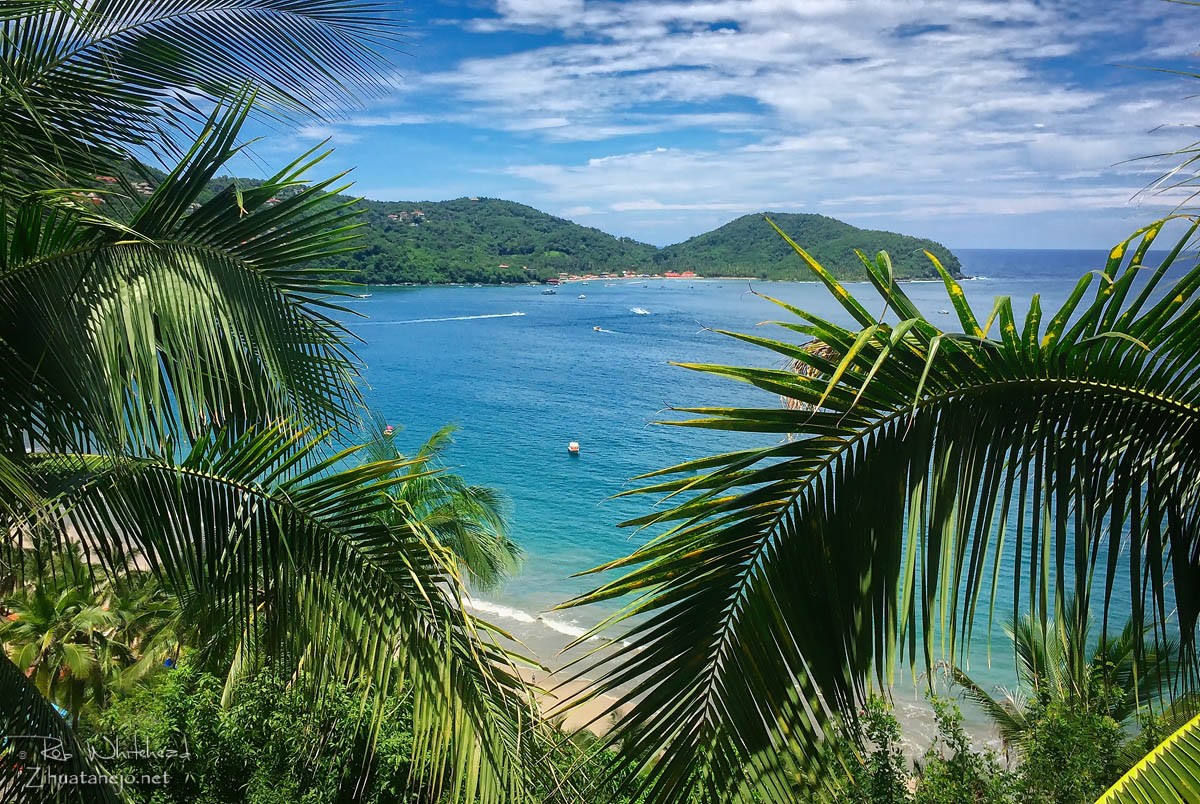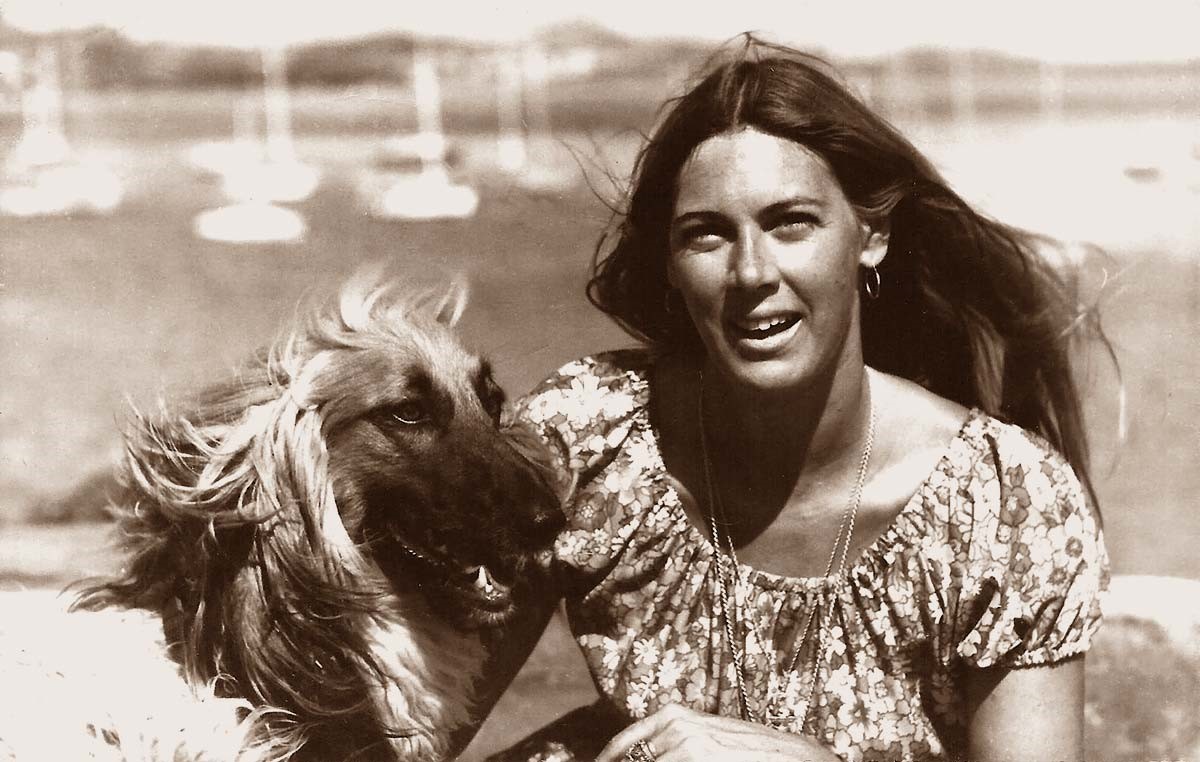by Rob Whitehead
Five months ago, on April 2018, Mr. Rob Whitehead sent parts 1 and 2 of his life-telling story “The Luckiest Gringo in Mexico”, now he has finally decided to publish parts 3 and 4! This is part 3, but in case you missed his previous publications, you can click on the links below and check them out…
Arrival
Zihuatanejo, Guerrero in August of 1974 was a very different place than it is today. There were no paved roads, no street lights, no luxury hotels. Telephones were few and far between. The teacher-turned-armed-revolutionary Lucio Cabañas had kidnapped the cacique and then Senador Rubén Figueroa who was campaigning to become state gobernador. Roadblocks and military patrols were everywhere, and the army was mistreating everyone. Revolution and repression were in the air. It was inspiring.
Our flight arrived in Acapulco from Mexico City after the short hop over the lush Filo Mayor of the Sierra Madre del Sur. The only thing we’d lost in transit so far was my dart board and darts at the luggage storage office in the Mexico City airport. Since the airline wouldn’t allow our long-haired blonde Afghan hound on the small prop-plane flight from Acapulco to Mexico City, we had to rent a car and drive. The sun was setting and it would be dark soon. In the chaos of transferring all our luggage to the rental car my 8-track stereo, 8-track tapes and Olympus Pen camera all disappeared.
Map in hand, the route looked easy enough. A two-lane blacktop was the only road heading up the coast from Acapulco, and the paved section ended at Zihuatanejo. I was 16 years old with my brand new unrestricted Florida Drivers License, and I was thrilled to be driving on our new adventure into the unknown.
Topes were a new experience for me since we didn’t have them in the U.S. Virgin Islands where I’d learned to drive or in Florida where I’d already driven much of the state including the Tamiami Trail from Miami to Tampa. I got fairly good at spotting them pretty quickly with a little help from my mother and younger brother. Everyone shouting together ¡TOPE! whenever we spotted one.
As we left Acapulco behind in the twilight and started to head down the twisting hillside road towards Pie de la Cuesta I had my first close call. Coming around a long curve at a nominal 60 or so MPH all of a sudden there was a herd of cattle across the road. There was no time to stop, and miraculously I was able to swerve between them. It was pitch black and there were no streetlights. Adrenaline rush over, I decided to drive a little slower. It made missing other cattle on the road a bit easier. There was almost no traffic, so I couldn’t follow anyone caravan-style like I would have preferred. But there were several military roadblocks that appeared out of nowhere, usually on s-curves in the middle of coconut plantations. They were looking for guns and drugs and a missing politician, but they were courteous enough to us, probably because we were foreigners.
Six hours of white-knuckle driving in pitch dark, the glows of small towns like Coyuca, Atoyác, Petatlán and Zihuatanejo the only distinguishing features besides a gazillion stars in the night sky, and we finally arrived at the Hotel Sotavento at La Ropa Beach in Zihuatanejo, right next door to the Hotel Catalina which remains open to this day. We checked in, got a room with running water, and noticed we’d lost our music and a camera in Acapulco. Oh well. We were alive and on an adventure in a strange land and it felt great to be here.
The next morning at first light we went to the Front Desk to make a phone call and met the ex-pat Gerald Shaw, a reclusive artist who had moved to Zihuatanejo years earlier to escape the racism and general madness of the USA. Gerald was also making a phone call, and he gave us a few useful tips, including the fact that there were only about 4 telephones in town.
My future wife’s family happened to be one of them because her father, Don Fernando, had been the telegraph operator during and after the Revolución, and they had also been the first house with an electric light bulb where friends and neighbors would gather daily at dusk. Their original house had been on the downtown beach called Playa Principal next to the zócalo about where Daniel’s Restaurant currently sits. But I still hadn’t met her yet, so all this knowledge was still in my future.
As we went to the dining terrace for breakfast I got my first glimpse through the palm trees of Zihuatanejo Bay and La Ropa Beach. A view that has changed very little though the years and which instantly had me spellbound. It was love at first sight!
I had a feeling of being on an island, not unlike St. Croix where I’d lived a year earlier. The succulent fresh papaya with lemon juice I had for breakfast and the smell of the ocean were intoxicating. Zihuatanejo was reviving tropical senses dulled from a year of living in Florida, a place that seemed chaotic and pretentious by comparison.
After an invigorating breakfast it was time to go look for a place to live for the next several months. So off we set down towards the southern end of La Ropa beach where we’d heard about a new bungalow available from a man called Don Chebo.
At the southern end of La Ropa where the long dirt road from town ended at the beach, the Alemán family had a small tienda with a small enramada and a couple of hammocks. We stopped for refrescos, Pepsi, no Coke. They were kind enough to point us in the direction of the home of Don Chebo, a wizened elderly little man with a sparkle in his eye and the gentle handshake of a shy working man. He and his wife, Doña Chella, had their modest home on a small rise about 50 meters back from the coast near where Restaurante La Gaviota now sits at the southern end of La Ropa Beach. They had just finished building a simple one-room brick structure with a teja roof another 50 meters or so back from the beach. There were a couple of cots and chairs and a table. No bathroom. No kitchen. There was a light bulb, but the electricity didn’t always work. There were a couple of oil drums for holding water that sometimes flowed briefly every few days or so from a black plastic hose that amazingly snaked all the way from town out to the La Ropa area to supply the Sotavento, Catalina and the Calpulli hotels. Patching leaks in the hose with shreds of rubber innertube was everyone’s shared responsibility if they wanted to have water.
There was only a handful of residents at La Ropa back then. A few foreigners and a few locals whom we would meet in the coming days.
I immediately got to work digging us a latrine and using leftover bricks to build us some sort of stove so we could at least boil water to make coffee in the morning. Don Chebo found us another cot, and we were amazed to find mosquito coils for sale at the little tienda so we could sleep soundly at night. It was rainy season and there was a wide shallow green scum-covered pond-like puddle across the road from our place that apparently connected with a small lagoon.
Our first night we were invited by Margot Chipman to visit her home a short distance away on another hill. Almost immediately I discovered a scorpion as I sat on the steps of her home with her 2 girls, one still an infant. I would discover 2 more before the evening was done, including one at our house.
The next morning was spent in town looking around and shopping for basic supplies, including a large machete for me and some white kerosene for the lamps and for mopping the floors. I met the son of a local tortillería, Paco Ayvar. He spoke English and was about my age, and he was eager to make a new friend. We hit it off well.
I also discovered that day that I loved licuados.
Later that afternoon back at our house my mother, brother and I were sitting on our porch watching macaws fly back and forth when our Afghan hound, Clete, spotted some cows on the other side the shallow green scum-covered pond. Before there was time to react he was flying off the porch, and in about 5 huge leaps he was halfway across the scum-covered pond before he lost his footing and rolled several times. Clete was totally unrecognizable when he stood up. That’s when we saw the “logs” move and realized they were crocs. We screamed and called frantically, and fortunately he came galloping back up to the porch, a stinking algae and mud-covered mess. After trying to rinse the mess out we decided that he would be more comfortable if we just cut all his hair off.
Don Chebo had another 3-room home that he was putting the finishing touches on, and within a few days after moving into the first house we moved into the larger house just past where La Gaviota restaurant now sits and within a stone’s throw of the bay. One room was a kitchen and bathroom with a shower, the large middle room became the bedroom for my brother and me, and the entrance room became my mother’s bedroom. My mother kept her cot but my brother and I decided we’d rather sleep in big hammocks. We also hung hammocks on the porch where we could enjoy the view of the bay.
By Robert Whitehead
(to be continued…)




